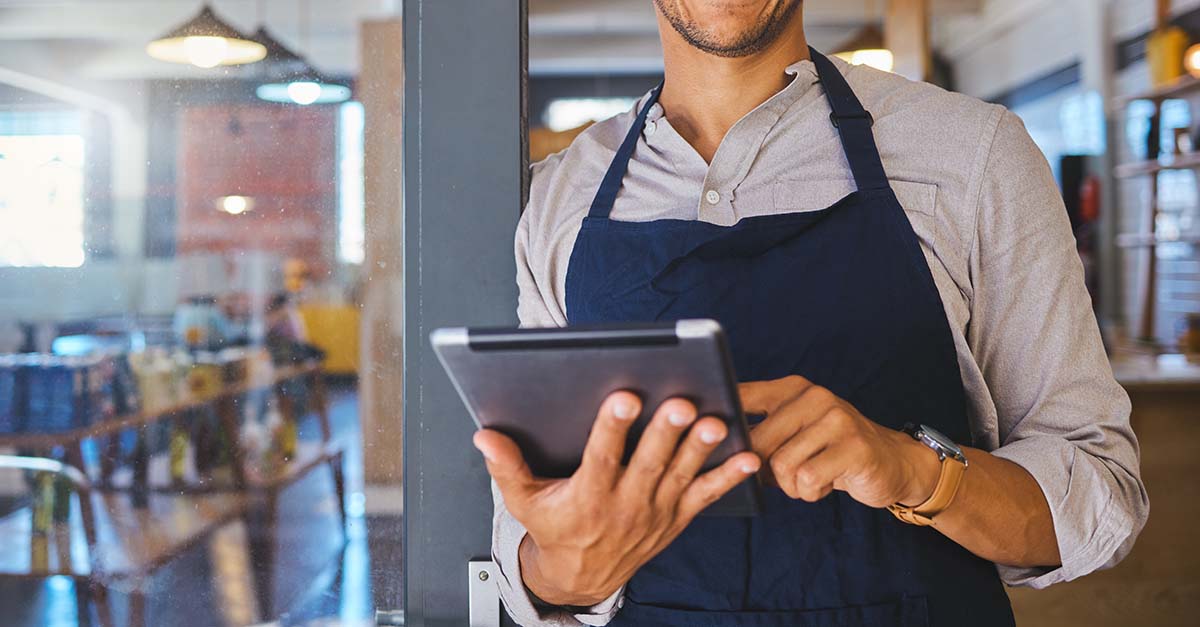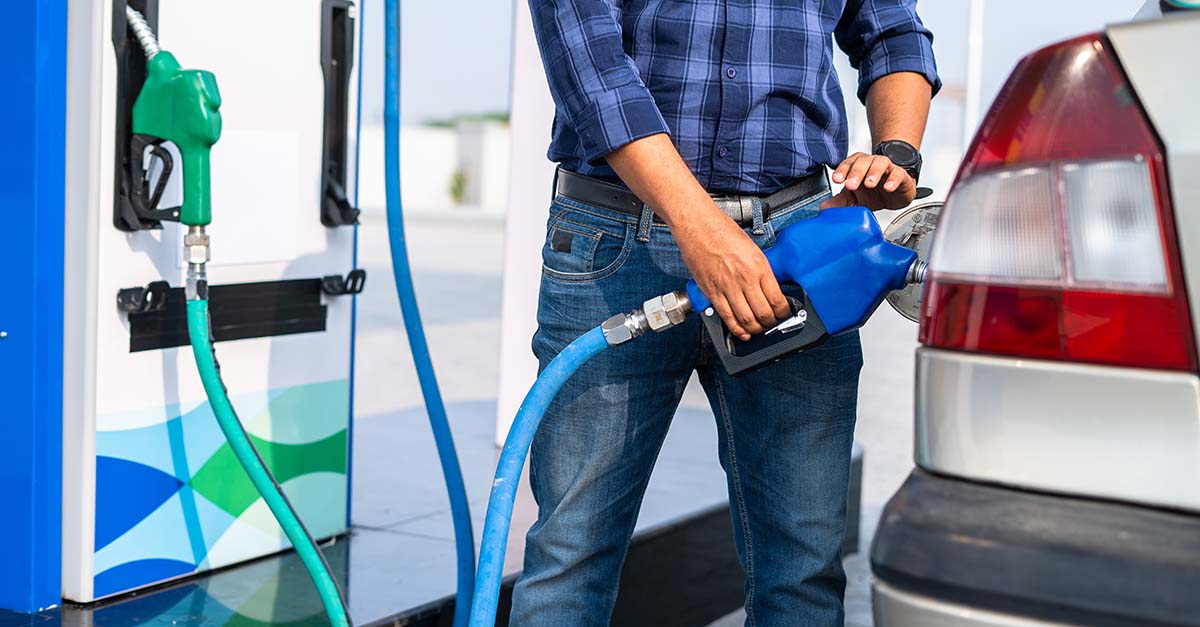How mobile apps can turn gas station visitors into c-store shoppers
Using mobile apps is second nature for today’s shoppers. C-stores can leverage that behavior to reach more customers and increase pump-to-store conversion.

David Poulnot
Consumers are used to using apps for ordering, for pick-up, for payments, and more. Fuel and convenience store retailers are jumping on the trend, and working to make their loyalty and rewards programs available on mobile.
How are retailers embracing mobile tech? And is it worth the investment?
Let’s dive in.
The benefits of adopting mobile tech for c-stores
The integration of mobile technology into convenience store operations is revolutionizing the retail landscape, offering an array of benefits that enhance both consumer experiences and operational efficiency.
Better reach
To attract customers in-store, convenience retailers have traditionally relied on customers noticing physical signage on highways, street corners, and more. Once inside, more signs would help encourage impulse buying, specifically in the checkout line. But retailers have learned that this strategy has limited reach — the only customers that are influenced by these signs are the ones that can see them. Not to mention, signs use a one-size-fits-all approach, which limits their resonance with different customers, and as a result, their profit potential.
Now, in today's digital age, retailers increasingly leverage digital and mobile platforms to engage new customers and personalize their shopping experiences. These digital tools enable retailers to reach audiences beyond their physical location and influence purchasing decisions at every point in the decision-making process.
Relevant experiences
The first-party data collected from these digital and mobile platforms allow retailers to learn more about their customers, and craft better or more valuable shopping experiences for them. We see examples of this in timely emails and texts, in push notifications from branded apps, in item-level promotions for each customer segment, and more. Some retailers take it a step further with personalization that provides one-on-one experiences, recommendations, and rewards based on individual preferences, and seamless integration with shoppers' existing buying habits.
Quantitative feedback
Digital tools give retailers quantitative metrics regarding how their investment is performing, with information like views, clicks, and overall spend. Mobile tech is particularly helpful because with different user permissions, retailers have more visibility into where and when customers are interested in interacting with the business. The more sophisticated platforms can even track how consumer behavior has changed as a result of the tech. In this way, tracking expected versus actual spend gives retailers a view into their overall return on investment, and paves the way for more in-depth insights into pump-to-store conversion, category-level trends, daypart breakdowns, and more.
The challenges c-stores face in adopting mobile tech
Most of the mobile tech that c-store retailers buy or build are directly related to their loyalty or rewards offering. A recent Upside survey found that of the 35% of people that belong to a fuel or c-store loyalty program, 52% of them access the program through a mobile app. The interest is there, and as retailers work to bring more customers into their loyalty programming in general, there’s additional opportunity to reach new audiences by investing in mobile tech.
Building scalable technology that guarantees a positive return on investment for operators remains challenging for a number of reasons:
- Technology gap: Many c-stores are still running on legacy systems and software that make it even more challenging to adopt new technologies, often resulting in labor-intensive processes that disrupt ground-level operations. And modernizing those systems can require significant investments — in development, implementation, and maintenance. That often requires a tradeoff, diverting funds from other projects.
- Difficult to differentiate: Low, static offers often presented as "loyalty rewards" have become widespread, sparking a race to the bottom; a separate but similar descent to the competition over sign prices. Customers are shopping around, so retailers have to stand out in a sea of similar efforts. Upside data shows that fuel and c-store loyalty program members, on average, belong to 2.5 different ones. When loyalty programs are table stakes, it’s difficult to differentiate against competitors and motivate repeated engagement.
- Difficult to gain traction: The flip-side of the statistics above — where only 35% of consumers belong to a fuel or c-store loyalty program, and about 52% of those individuals access the program through a mobile app — is that engagement with branded programming and tech could be higher. This is not a build-and-they-will-come situation. After investing to create an in-house app or to license one from an existing loyalty provider, it requires substantial effort to persuade users to download an app they might only use for a few transactions a month.
- Measurement tropes. It’s tempting to use metrics like, views, clicks, downloads/sign ups, or even return on ad spend (ROAS) to determine success for your mobile tech. But signups/membership and engagement are not the same thing, and increases in revenue may not be profitable. It’s increasingly difficult to assign credit to the specific touchpoint that led to a net-new purchase, and top-line sales lifts can be incorrectly attributed to macroeconomic trends or organic sales increases. So while the numbers may look promising, it’s important to drill down into what they mean for your bottom line.
Overcoming these challenges for c-stores
You don’t have to disrupt your business to reap the benefits of mobile tech adoption.
Existing digital marketplaces have already developed the infrastructure required for successful mobile tech implementation — retailers only need to tap in.
Marketplaces help c-store retailers:
- Bypass the technology gap. Nimble marketplaces leverage anonymous transaction log data in lieu of traditional point-of-sale (POS) data. That way, retailers can streamline the transition of technology to the cloud, bypassing the need for direct integration with on-site systems. As the platform manages the online experience, operators minimize disruptions and concentrate on delivering exemplary site-level execution.
- Reach high-intent shoppers as they’re looking to buy. Marketplaces have massive, already-built customer networks that use their mobile app to decide where to buy while they're on their phones and on the move. Listing your sites in the marketplace puts your business on customers’ radar more often, so you’re top of mind when they’re deciding where to shop. That means free exposure for your business, with zero acquisition costs and net-new sales.
- Use personalization to differentiate. Advanced retailers often segment their target market into smaller groups, based on information like interests, needs, age, or region. Turn customer segmentation on its head, using one-to-one personalization to influence each customer. Advanced algorithms deliver personalized experiences and rewards based on customers’ unique spending habits, while automatically adjusting to preserve your profit margins. Both retailers and their customers win.
- Measure every transaction with accuracy. Instead of measuring success by looking at in-app behavior, same-store sales over time, like-for-like store analyses, or comparing the behavior of different buyer segments, choose platforms that measure profit on every single transaction. Marketplaces with rigorous “test versus control” measurement for each individual user, at scale across millions of customers and hundreds of thousands of retail locations, enables retailers to understand and change consumer behavior in a way that drives bottom-line profit.
Upside as an example
Upside’s digital marketplace does all of this and more. The platform helps retail partners gain access to millions of consumers without taking on the burden of in-house development and maintenance, user acquisition, offer delivery, and more. That makes for an enhanced customer experience, and drives incremental sales without impacting store operations.
When retailers launch Upside at their c-store, they see:
- 70% increase in Upside user pump-to-store conversion after launching their c-stores
- 21% increase in new customers driven into the c-store in the first 60 days on Upside
- 40% increase in performance compared to fuel-only sites
- 58% of users say Upside influences their c-store purchases
And anecdotally, customers love it. A survey of c-store users at a top independent retailer partner found:
- 78% of those surveyed said Upside’s c-store offers influenced them to purchase gas from the retailer more often
- 58% of those surveyed said they try to use Upside for all gas expenses and are now making convenience store purchases as well.
The future of mobile tech in the c-store space
The rapid expansion of mobile technology in the c-store sector will play a decisive role in determining future winners and losers. Channel blurring and mergers and acquisitions are accelerating, with Independents like Circle K, 7-Eleven, Wawa, and KwikTrip, and with Big Boxes like Costco and Sam’s Club rapidly gaining market share in a shrinking market.
There are solutions to the challenge of building scalable technology that guarantees a positive return on investment for operators. It’s not a matter of “if'' retailers will turn to these solutions, but “when.” That answer will shape competition in each market going forward.
Share this article:
David is a results-driven sales executive with a demonstrated history of success within enterprise relationship management and business development. At Upside, David serves as the Vice President of Multi-Vertical Sales where he is a key stakeholder in defining Upside’s merchant acquisition strategy along with leading the team that executes on the strategy nationwide.
Request a demo
Request a demo of our platform with no obligation. Our team of industry experts will reach out to learn more about your unique business needs.











.png)




